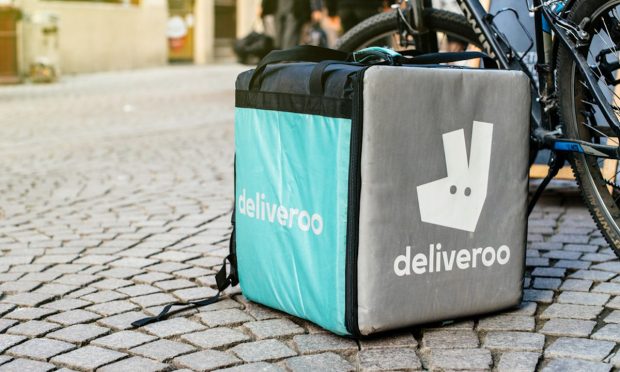Deliveroo Doubles Premium Membership Through Amazon Prime Partnership

As restaurant aggregators compete to gain consumers’ loyalty amid a growing desire for on-demand delivery, one contender is going back to the source. Many attribute the growth of the on-demand economy to the rise of Amazon, and the U.K.-based restaurant and grocery delivery service Deliveroo is tapping Amazon’s convenience-seeking customer base to grow its premium member base.
The delivery service launched a partnership with Amazon Prime in mid-September to make its Deliveroo Plus Silver premium membership plan available for free for a year to Prime members. The program was an immediate success for the delivery service, with its Plus membership doubling in the first month, per a company presentation shared on Wednesday (Oct. 20).
“This offer is available to Amazon’s entire U.K. and Ireland Prime base, which opens up a pool of millions of potential new consumers for Deliveroo,” Deliveroo CEO Will Shu told analysts on a call. “Prior to the launch, so let’s say the end of August 2021, Deliveroo Plus subscribers represented approximately 15% of all UKI monthly active consumers. As of today, the U.K. Plus subscriber base has more than doubled in size … about a month since the launch.”
This growth has been comprised of existing Deliveroo customers becoming Plus members, as well as customers entirely new to Deliveroo taking advantage of the program, which offers free delivery on orders over £25/€25, and which typically costs £3.49 per month.
The company has also been making moves into the ultra-fast grocery delivery space. In August, the launch of 10-minute grocery delivery service Deliveroo Hop, in partnership with supermarket chain Morrisons, brought the company into competition with other 10- or 15-minute grocery delivery services in the United Kingdom, such as Gorillas, Getir and Weezy.
“This is a model that we think over time will be appealing to different grocers around the world,” Shu said. “We have a well-established consumer base that associates us with food, and I think that combining these two things will drive a lot of value to all sides of our marketplace.”
Research from PYMNTS’ report “The Bring-It-to-Me Economy,” created in collaboration with Carat from Fiserv, finds that if United Kingdom consumers are anything like United States consumers, the market opportunity for restaurant aggregators has grown enormously since March 2020. In the survey of more than 5,200 U.S. adults, 46% of respondents reported that they are ordering food from restaurants using aggregator services more often than they were before the start of the pandemic. Additionally, the report found that consumers are now 31% likelier to eat their restaurant orders at home than they are to dine at a restaurant.
You may also like: QSRs’ Lagging Loyalty-Reward Investment Hurts Innovation and Sales
Grocery shoppers have been slower to get on board. Research from PYMNTS’ report, What Consumers Expect From Their Grocery Shopping Experiences, created in collaboration with ACI Worldwide, which surveyed more than 2,300 U.S. consumers about their grocery shopping habits, found that 23% of shoppers are buying groceries online and having the products delivered to their houses. However, only 11% reported that they buy online using an aggregator that delivers the products the same day, such as Deliveroo, and only 2% listed this as their most preferred method.
Read also: Digital Features Can Help Grocers Win Over 43% of Shoppers
